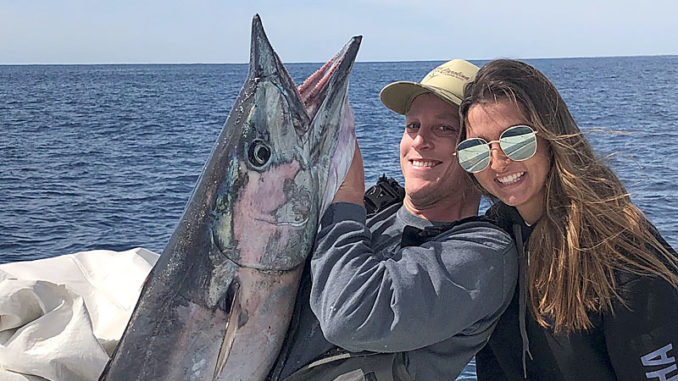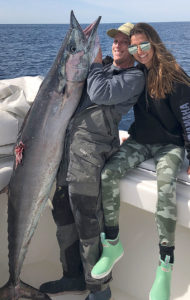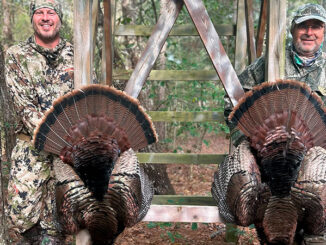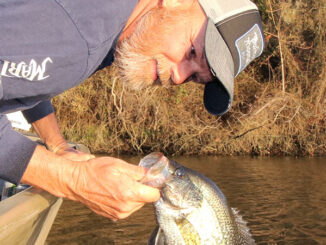
Wahoo make the woes of winter worth enduring
January, the middle of winter, brings chilly weather, abnormal energy bills, and wahoo. For some anglers in the Carolinas, the cold generates more than just a big bill. Triple-digit fuel bills several times a week can be the norm for anglers making trips to the Gulf Stream. But when monster wahoo are biting in January, another big fuel bill is well, worthwhile.
Trask Cunningham, a member of the Choice of Two/Ocean Isle Fishing Center fishing team, lives in Horry County, S.C., and fishes like it’s his job, And sometimes like it’s a life-or-death situation. He and teammate Corey Bellamy typically catch tournament-winning king mackerel and some massive wahoo, including one last year that pushed the 100-pound mark.
Cunningham said the January bite can be incredible.
“We have epic bites this time of year off the coast of North Myrtle Beach,” Cunningham said. “Temperature shots, the time of day, and moon phases have the greatest impact on winter wahoo fishing.”
The week leading up to a full moon can produce an epic bite, especially when Cunningham and Bellamy find a temperature break at 74 to 76 degrees.
Cunningham and Bellamy typically fish out of Little River Inlet. They sometimes travel more than 50 miles offshore and often much farther to find wahoo. In January, Cunningham prefers some areas off the coast of North Carolina.
An early start always helps
“The northern areas are best in January. The Blackjack and the Scarp are some of our favorites,” he said.

Even with a long trek, an early start can be a day-maker.
“We leave early in the winter, in the dark, and are normally fishing by sunrise. The fish typically feed early, at noon, and late on a full moon,” he said.
Cunningham and Bellamy use a wide assortment of rigs on both surface and deep lines on planers. They use medium to large ballyhoo rigged on a variety of Ilander trolling lures of various color combinations of purple, blue and white.
Sometimes they can pull right up and start catching fish immediately. But other times, the fish are a little hard to locate. Wahoo are highly mobile and are known to travel great distances in one day. That makes it tough for an angler who has already traveled 65 miles from the dock in the dark.
When the fish are scattered, Cunningham switches to searching via high-speed trolling with specialized, high-speed lures.
“High-speed trolling is a great technique this time of the year,” Cunningham said. “It allows us to cover ground efficiently to find the wahoo that are stacked up over a certain area or break. And once we find a concentration of fish, we put ballyhoo back out, and it’s usually non-stop action.”
________________
Wahoo kabobs! Click here for a great wahoo recipe.





Be the first to comment